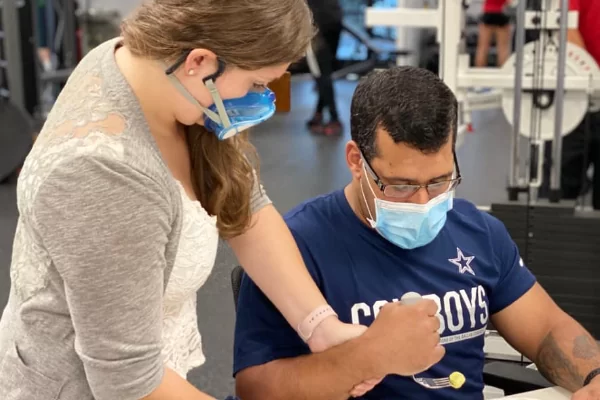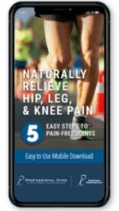At Professional Care, we agree with the Centers for Disease Control and Prevention and other professional organizations that recommend physical therapy over prescription opioids for chronic pain management.
You’ve seen the headlines, and you’re aware that opioids are a major contributor to America’s widespread drug crisis. We also understand that if you or a loved one suffers from chronic pain, you may be frustrated and confused about your options.
Many people are unaware of how effective physical therapy can be in alleviating even the most difficult symptoms—all without the use of drugs or invasive procedures.
We’d love to show you how physical therapy can help you feel (and function) better than ever. Contact Professional Care Physical Therapy to make an appointment with one of our East Patchogue, Riverhead, and Islip NY therapists today!
What are the risks associated with opioids?
It is critical to understand the distinction between opioids and over-the-counter medications. There aren’t many significant health risks when people use over-the-counter medications to relieve pain.
Advil, Tylenol, and Ibuprofen are generally safe to use in moderation if you are looking for immediate relief after an incident such as a car accident.
However, prescription-strength medications may be issued if you are in severe pain as a result of a more serious injury sustained during the accident. After all, severe pain necessitates severe intervention.
Opioids are the most commonly prescribed pain relievers in the United States. Despite how common they are, they contain some shockingly harmful facts:
- Opioids are the most commonly abused prescription medication and are highly addictive.
- Opioids are a very dangerous class of drugs. Opioids include heroin, as well as prescription pain relievers such as oxycodone, hydrocodone, morphine, and others.
- Every year, over 2 million people in the United States become addicted to pain medications, many of which are opioids.
- A quarter of heroin addicts developed their addiction after becoming addicted to prescription opioids.
While disturbing, these facts cannot be ignored. They paint a bleak picture of prescription pain medication use in the United States, which experts believe has reached epidemic proportions.
You don’t have to have a history of addiction to become addicted to opioids; in fact, many people who become addicted have never had a history of drug dependency.
Physical therapy, fortunately, can help provide the same pain relief in a much safer, healthier, and natural way. Physical therapy can help you manage your pain without the use of drugs, giving you the opportunity to avoid these risks altogether.
The top five reasons to think about physical therapy
There are many benefits to seeing a physical therapist, including:
1. You’ll gain access to a wide variety of treatment options.
When you visit a physical therapist for pain relief, you will not receive only one type of treatment. You will receive a variety of services that complement one another and improve their overall effectiveness. The end result? A cost-effective and all-encompassing healing journey for you!
2. Physical therapy gives you the ability to be your best self.
Physical therapists, unlike many other healthcare providers who are time-constrained, have a lot of face-to-face interaction with their patients and can take the time to get to know their goals and preferences.
This ensures that patients are involved in their care plans, are educated about their health condition, and have access to the home exercises, stretches, and other lifestyle changes required to achieve the best results. Physical therapy is a hands-on experience that puts you back in control of your health.
3. A physical therapist will get you up and moving!
According to research, exercise is one of the most effective ways to manage chronic pain. But, if a person is in so much pain that they can barely get out of bed, how can they begin exercising more? Here’s where physical therapy comes in.
Your physical therapist can manage your condition as well as other factors that make exercise difficult (such as range of motion limitations, tissue tension, weakness, and incoordination). A physical therapist can help you reduce your risk of other chronic diseases by helping you get more exercise and showing you which exercises are best for you and how to do them correctly.
4. Physical therapists can use non-invasive, drug-free, and safe methods to relieve chronic pain and inflammation.
Physical therapists use techniques such as diathermy, dry needling, electrical stimulation, ultrasound, and others to treat pain, muscle spasms, inflammation, and other symptoms.
These modalities pose little to no risk of side effects, and unlike drugs, they do not pose the risk of dependency or withdrawal. They simply boost your body’s natural ability to heal itself (instead of just “masking” the pain). A physical therapist can ensure that these techniques are used correctly (intensity, location, type, duration, and frequency) through extensive training.
5. Manual therapy promotes healing while also relieving chronic pain and tension.
A physical therapist has received training in techniques such as joint mobilization and manipulation, massage, myofascial release, Active Release Techniques, and Proprioceptive Neuromuscular Facilitation. These can cause physical and physiological changes in the connective tissues, central nervous system, lymphatic system, and other areas of the body. These techniques have been shown to reduce pain and elicit healing responses that can prevent pain from returning.
Contact Professional Care Physical Therapy today to find chronic pain relief.
We invite you to schedule an appointment at our physical therapy clinic today, whether your pain is the result of a sports injury, a chronic joint disorder, a stroke, or something else entirely.
Don’t just hide your pain; heal it at its source!
Tags: physical therapy, chronic pain, Natural Treatment, health and wellness, physical therapist, pain and inflammation




